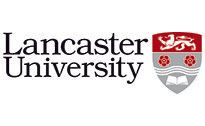
HVAC - District Cooling Plant – Design, Operations and Maintenance
Course ID: 2512017101414EGI
Course Dates : 01/12/25 Course Duration : 5 Studying Day/s Course Location: Dubai, UAE
Language: Bilingual
Course Category: Professional and CPD Training Programs
Course Subcategories: Operations and Process Excellence
Course Certified By: * Projacs Academy
* Professional Training and CPD Programs
Certification Will Be Issued From :
KSA
Course Fees: £2,958.13
Vat Not Included in the price. VAT may vary depending on the country where the course or workshop is held.
Click to Pay
Date has passed please contact us Sales@e-s-hub.com
Course Information
Introduction
District cooling systems represent a cornerstone of sustainable urban infrastructure, providing centralized cooling solutions to large-scale developments such as commercial complexes, hospitals, universities, and industrial facilities. These systems are designed to optimize energy efficiency while reducing environmental impact, aligning with global trends toward decarbonization and sustainability. As cities continue to grow and demand for efficient cooling rises, district cooling plants have emerged as an indispensable solution. However, the complexity of their design, operation, and maintenance requires specialized expertise that is often lacking in the industry. This course bridges that gap by equipping participants with the technical knowledge and practical skills necessary to excel in this critical field.
One of the key challenges in district cooling lies in balancing operational efficiency with cost-effectiveness. Engineers and facility managers frequently encounter issues such as suboptimal system performance, excessive energy consumption, and inadequate maintenance protocols. These challenges are compounded by evolving regulatory frameworks and technological advancements that demand continuous learning and adaptation. For instance, a case study from Dubai’s Downtown District Cooling project highlights how inefficient chiller sequencing led to a 15% increase in operational costs before corrective measures were implemented. This underscores the importance of mastering system design principles and adopting best practices in operations and maintenance.
The course addresses these gaps by integrating theoretical foundations with hands-on applications, enabling participants to tackle real-world problems effectively. Drawing on established frameworks such as ASHRAE standards and ISO 50001 for energy management, the curriculum ensures alignment with industry benchmarks. Participants will explore innovative technologies like thermal energy storage and smart control systems, which are increasingly being adopted to enhance system efficiency. By understanding both traditional methodologies and cutting-edge innovations, professionals can position themselves at the forefront of the HVAC industry.
For organizations, investing in district cooling expertise translates into measurable benefits, including reduced operational costs, improved reliability, and enhanced sustainability metrics. A recent report by the International District Energy Association (IDEA) revealed that optimized district cooling systems could reduce energy consumption by up to 40%, leading to significant savings. On an individual level, mastering this domain enhances career prospects, as specialists in district cooling are in high demand across various sectors, including real estate development, utilities, and consulting firms.
To illustrate the practical relevance of the course, consider the example of Singapore’s Marina Bay district cooling network, one of the largest in the world. Engineers involved in its implementation had to navigate complex challenges related to load forecasting, piping design, and integration with renewable energy sources. The success of this project exemplifies how robust technical knowledge and strategic planning can transform ambitious visions into reality. Participants will gain insights into similar projects, enabling them to contribute meaningfully to their own initiatives.
Ultimately, this course empowers professionals to make informed decisions that drive value creation. Whether designing a new plant, optimizing existing systems, or ensuring compliance with regulatory requirements, participants will emerge equipped with the tools needed to succeed. By fostering collaboration among multidisciplinary teams and promoting a culture of continuous improvement, the course lays the groundwork for long-term success in the rapidly evolving HVAC landscape.
Objectives
By attending this course, participants will be able to:
Analyze the fundamental principles of district cooling plant design, including load calculations and system configurations.
Evaluate the performance of chillers, pumps, and heat exchangers using advanced diagnostic techniques.
Design efficient distribution networks by applying hydraulic modeling and optimization strategies.
Implement preventive and predictive maintenance programs to minimize downtime and extend equipment lifespan.
Apply energy management principles to achieve compliance with international standards such as ISO 50001.
Assess the feasibility of integrating renewable energy sources and thermal storage systems into district cooling operations.
Develop comprehensive operational protocols aligned with safety regulations and environmental guidelines.
Who Should Attend?
This course is ideal for:
HVAC engineers and technicians seeking to deepen their expertise in district cooling systems.
Facility managers responsible for overseeing cooling operations in large-scale developments.
Energy consultants tasked with advising clients on sustainable cooling solutions.
Project managers involved in the planning and execution of district cooling projects.
These groups will find the course valuable due to its focus on practical applications and actionable insights. While prior experience in HVAC systems is beneficial, the course is structured to accommodate intermediate learners who already possess foundational knowledge but wish to advance their skills further. Advanced practitioners may also benefit from the emphasis on emerging technologies and regulatory updates.
Training Method
• Pre-assessment
• Live group instruction
• Use of real-world examples, case studies and exercises
• Interactive participation and discussion
• Power point presentation, LCD and flip chart
• Group activities and tests
• Each participant receives a 7” Tablet containing a copy of the presentation, slides and handouts
• Post-assessment
Program Support
This program is supported by:
* Interactive discussions
* Role-play
* Case studies and highlight the techniques available to the participants.
Daily Agenda
The course agenda will be as follows:
• Technical Session 08.30-10.00 am
• Coffee Break 10.00-10.15 am
• Technical Session 10.15-12.15 noon
• Coffee Break 12.15-12.45 pm
• Technical Session 12.45-02.30 pm
• Course Ends 02.30 pm
Course Outlines
Fundamentals of District Cooling Systems
Overview of district cooling technology and its role in sustainable urban development.
Principles of thermodynamics and heat transfer in cooling systems.
Load estimation and profiling for diverse building types.
Introduction to key components: chillers, cooling towers, and pumps.
Day 2:
System Design and Optimization
Hydraulic modeling and pipe sizing for efficient distribution networks.
Selection criteria for chillers and auxiliary equipment.
Integration of variable speed drives (VSDs) for energy savings.
Case study analysis: Lessons learned from successful implementations.
Day 3:
Operations Management
Best practices for daily operations and monitoring.
Use of SCADA systems for real-time data acquisition and analysis.
Strategies for optimizing chiller sequencing and load balancing.
Troubleshooting common operational issues.
Day 4:
Maintenance Protocols
Preventive vs. predictive maintenance: Key differences and applications.
Inspection schedules and condition-based assessments.
Root cause analysis techniques for equipment failures.
Extending asset life through effective lubrication and corrosion control.
Day 5:
Compliance and Innovation
Regulatory frameworks governing district cooling operations.
Achieving ISO 50001 certification for energy management.
Role of thermal energy storage in peak load management.
Future trends: AI-driven analytics and IoT-enabled systems.



















































